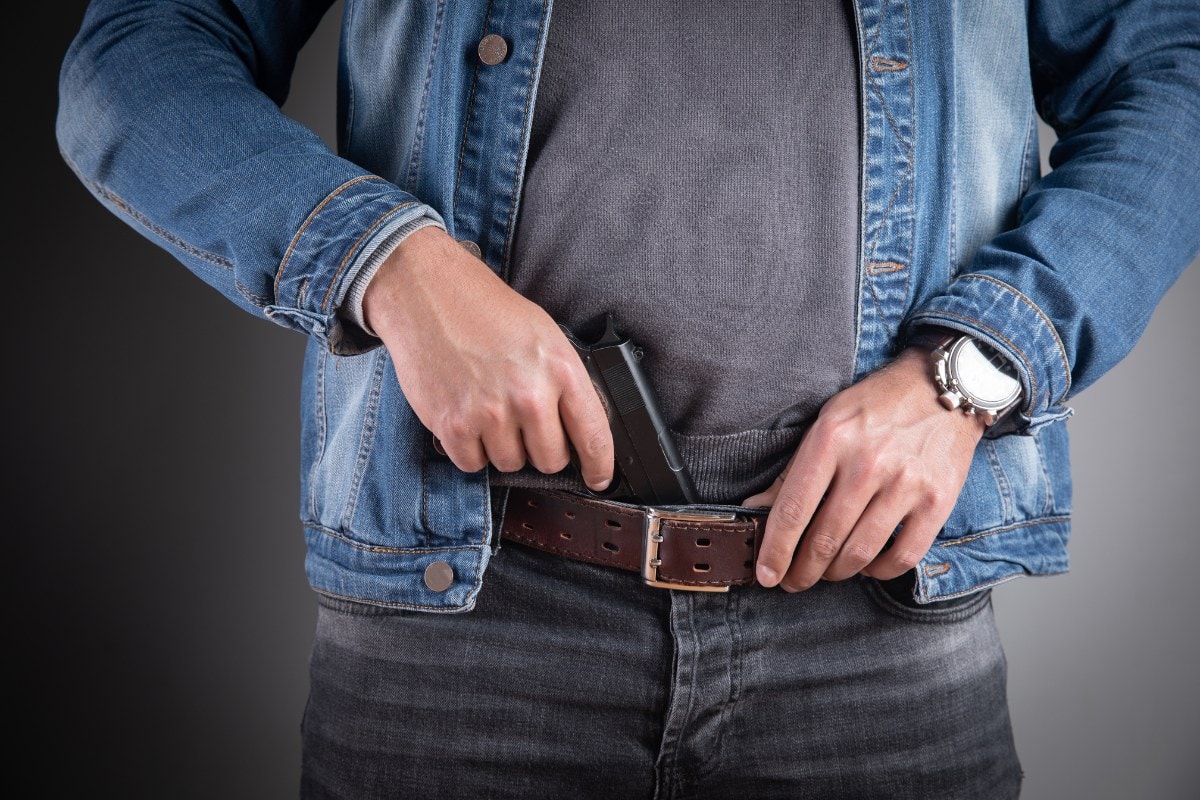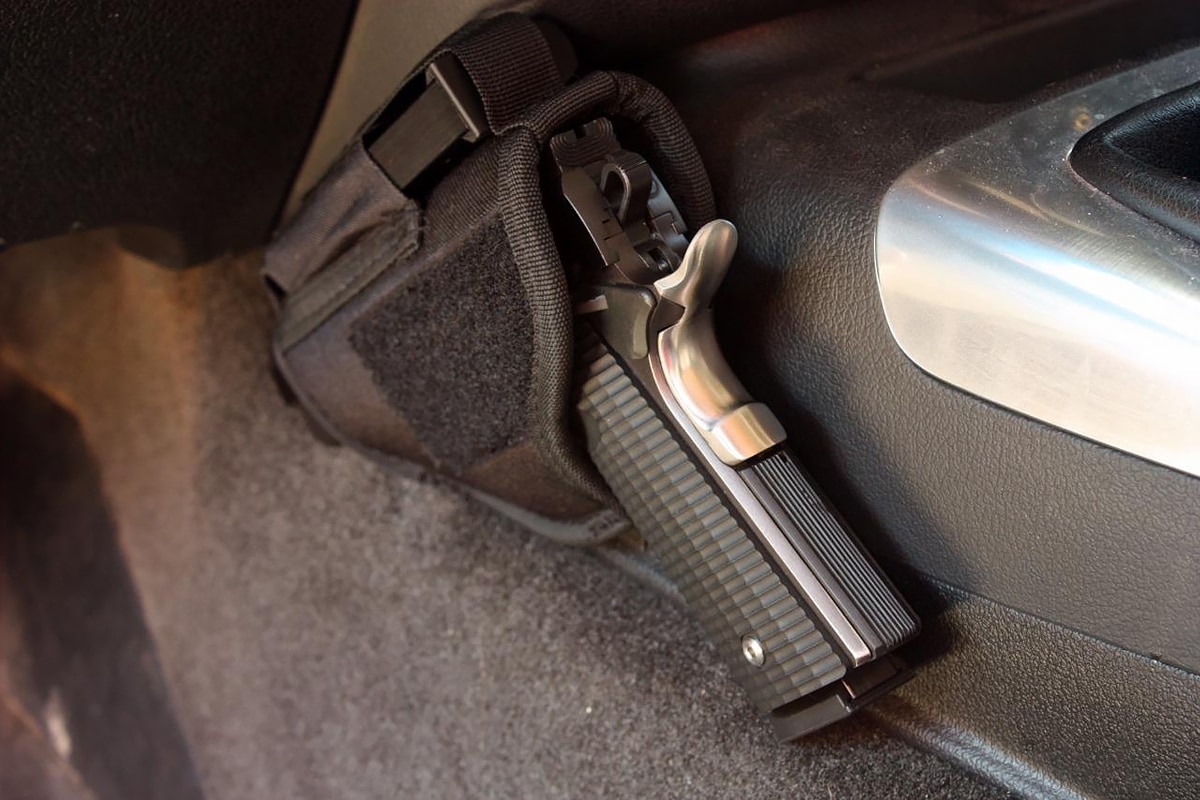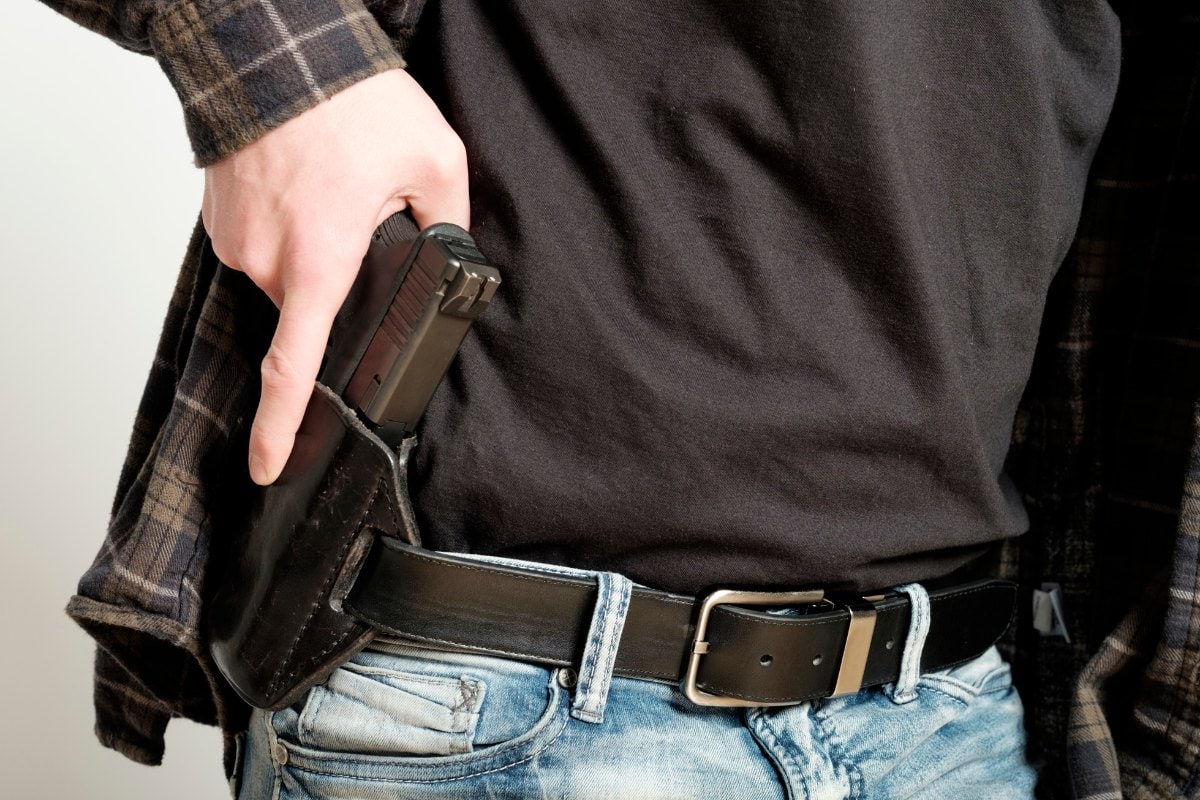There’s so much information out there about carrying your pistol at the appendix inside the waistband (AIWB) position and even more about carrying concealed.
The question that gets asked all the time is why even think about appendix carry. The main argument is, “I don’t want my pistol pointing at my junk, period”! The second is, “There is no way for it to be comfortable carrying my gun there”. For the purpose of informing people about this carry option and not just personal opinions, let’s try to stick to what has already been discussed throughout the holster manufacturing and conceal carry community about appendix carry.
Dangers of AIWB Carry
First, let’s start with the obvious dangers of carrying AIWB. Carrying in this position forces your pistol to point at very important body parts. Not only your “junk” but also your femoral artery. The biggest training point to make for carrying in this position safely is following one of the Cardinal Safety Rules for handling a firearm. “Keep your finger off the trigger until you’ve made the conscious decision to fire and your sights are aligned and on target”. There are several interpretations of that rule. But if you train and practice your draw efficiently and safely, there is a very small chance of you putting your finger on the trigger during the draw process where you are unintentionally pointing your gun at your body parts.
If you train regularly and have high expectations of yourself when it comes to training safely, you will never have to worry about shooting yourself while drawing or re-holstering your firearm. With that being said, buy a holster that protects the trigger area. Make sure it covers most, if not all of the trigger guard, so that nothing can get to the trigger while you have your gun holstered.
The most important purpose of a holster is to protect that area from being able to let anything touch the trigger while your gun is not being used. Take your clothing into consideration as well when re-holstering. It is highly recommended that you practice your draw from AIWB with a dry (empty and safe) gun.
Advantages of Appendix Carry
Let’s get past the dangers and get into some of the advantages of carrying AIWB. Most of us train at a range with static targets facing us and we shoot from the different distances that most ranges have available. How many of you train while sitting in a car, sitting in a booth as if in a restaurant, in an area that has people in close proximity to you, walking in a park, sitting at a desk, etc? If you were to put yourself in a training environment with these variables taken into consideration, you would find that it is difficult to draw effectively when you carry in positions like the 4 o’clock, ankle holstered, or the small of your back. Of course, carrying at these positions makes it more comfortable to carry your gun but how easy can you get to your gun and draw it if you had to?
When you carry AIWB, your gun sits right in front of your body where you have full control. Whether you are walking, sitting, running or doing whatever, your gun is easily accessible for you to draw. Along with the other carry options, if you train constantly to draw in all those situations, you will get efficient with your draw in any position. According to experiences and training, along with listening to and seeing other instructors who teach conceal carry courses, drawing from the AIWB position seems to be the fastest and most consistent compared to the different ways there is to carry your pistol concealed.
If you get into a situation where things get up close and personal with someone and they go hands on with you, it’s also a good place to have your weapon so that you can control it and get to it if you had to. Train carrying your gun in different positions (safe and empty) and have someone go hands on with you and see what works for your style and level of grappling and dirty fighting.
Speed
An instructor once said, “the faster you are out of the holster, the faster you should be on target. The faster you are on target, the more likely you will win a gunfight”. There are several other factors that need to go your way along with a fast draw but the quicker you are in a gunfight, the better. Depending on who you speak to and what you read, there are several stats that show a majority of deadly shootings happen within 7 to 15 ish yards, and usually within a few seconds. No matter the distance, weather, your mental state, location or the alignment of the planets that day, in a gunfight, your draw should always be quick and efficient. Speed is one of the factors that need to be on your side in order for you to have better odds of winning a gunfight since you’re more than likely going to be in a reactionary capacity and behind the curve.
Most AIWB holsters are made for speed. On average, if a person trains constantly and consistently with an AIWB holster, their first shot from concealed can be under 1 second easily. Some people can shoot 2 and 3 rounds from concealed and with an AIWB holster in under a second.
Comfort and Concealment
When you shop for a holster, especially one that sits inside the waistband, your first thoughts are usually, “Will this conceal my gun well?” and “Will it be comfortable?”.
When you walk around carrying concealed, look to see if you can spot anyone else who may be carrying. The places to usually look for a gun is on a person’s sides or on their back, since most people carry in these positions due to comfort. Now, you can also look for people who carry around the appendix area. When you think about it though, how many people look at another person’s crotch area in public? This is a good place to conceal a gun because not many people look there. If they do, you’re more than likely going to catch them looking, which should raise your situational awareness.
It won’t be fair to tell you carrying AIWB is more comfortable than any other way. It takes some time to get used to and the regular way you sit and squat is going to change because you’ll have to do it with better posture. No matter the size of your body, fat or skinny, there are no issues with comfort when carrying AIWB. The level of dealing with discomfort will be different for each person but it will only take a couple of weeks carrying and training in the AIWB position for you to get used to it.
Conclusion
There are another thousand words on different aspects of carrying concealed and AIWB carry, but let’s stop here. Please research and shop around for the different ways to carry before you decide. When you do decide what to buy, train with it until you get really good and carry it as much as possible.
If you do appendix carry, be extra mindful of when to put your finger on the trigger. There are plenty of holster makers, instructors and well-trained people out there that are always willing to answer questions about carrying concealed that you may have. You just have to reach out.
Stay safe!









